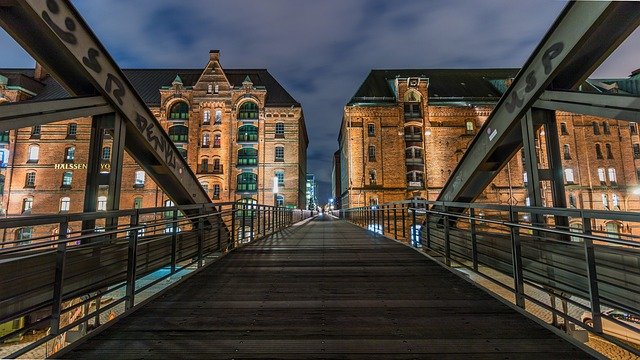
In an urban environment, the pedestrian bridge minimizes the risk of traffic accidents.
A bridge is a construction that is developed in height to make it easier to cross an obstacle . Bridges generally pass over moats, rivers, etc. Pedestrian , on the other hand, is something exclusive for pedestrians : people who move on foot.
Structure to walk through
A pedestrian bridge , therefore, is a structure through which only individuals advancing without vehicles can circulate . Motorcycles, cars, vans, trucks, and trains , for example, cannot cross a pedestrian bridge.
There are multiple types of pedestrian bridges. They are usually designed to support a reduced load : that is why access to these bridges with motor vehicles is prohibited. As for bicycles , the authorization to pass depends on the characteristics of each bridge.
There are pedestrian bridges that are static and remain fixed. Others, however, are mobile and can be raised or folded according to needs. Furthermore, it must be taken into account that pedestrian bridges have a very variable length and height .
Environmental impact
Although pedestrian bridges encourage travel on foot (thus minimizing polluting emissions), many cities favor bridges for vehicles with the aim of streamlining traffic. In these cases, the idea is to give priority to cars and buses in public circulation, to the detriment of pedestrians. However, many vehicular bridges include sections or walkways for walkers.
The discussion seems endless when the priorities of pedestrians and those of drivers clash. Although the importance of the environment has grown considerably in recent decades, the automobile industry could not be sustained if we all preferred to move around the city on foot. For this reason, governments look for middle ground, decisions that satisfy both parties without affecting the environment in an irreversible or too obvious way. Bridges that allow the passage of vehicles and pedestrians, therefore, are the most "diplomatic."
Pedestrian bridges of the world
The Millennium Bridge is an example of a pedestrian bridge. It is a suspension bridge opened in 2000 that allows you to cross the River Thames in London ( England ). Also in London is the Rolling Bridge , which dates back to 2004 and is characterized by having a hydraulic system that allows it to be curved to free the canal, leaving free passage for boats.

A common use of the pedestrian bridge is to cross rivers or streams.
In Singapore we find the pedestrian bridge called Henderson Waves , which was completed in 2008. Its particular design, which displays iron "ribs" along an undulating path of 274 meters, was carried out by a London studio. It is the highest pedestrian bridge in the city, and its purpose was to join two parks that are located in the southern part of the island. The High Trestle Bridge, on the other hand, was built in the United States and is another of the most striking in the world. Beyond its extension , 800 meters, and being located 40 meters high, its design consists of a series of square steel arches that generate a peculiar visual effect given its orientation along the path.
China is another country that has a unique pedestrian bridge: the Lingzidi . Its construction was completed in 2012 and allowed the residents of the town of the same name to easily cross the river to carry out their domestic and work tasks. Although it is a small structure , it is of great importance to the local economy. In Holland we have the Moses Bridge, which divides the canal from the Roovere fortress. Since its walls remain flush with the water, the bridge goes unnoticed if we look at it from a certain distance.
